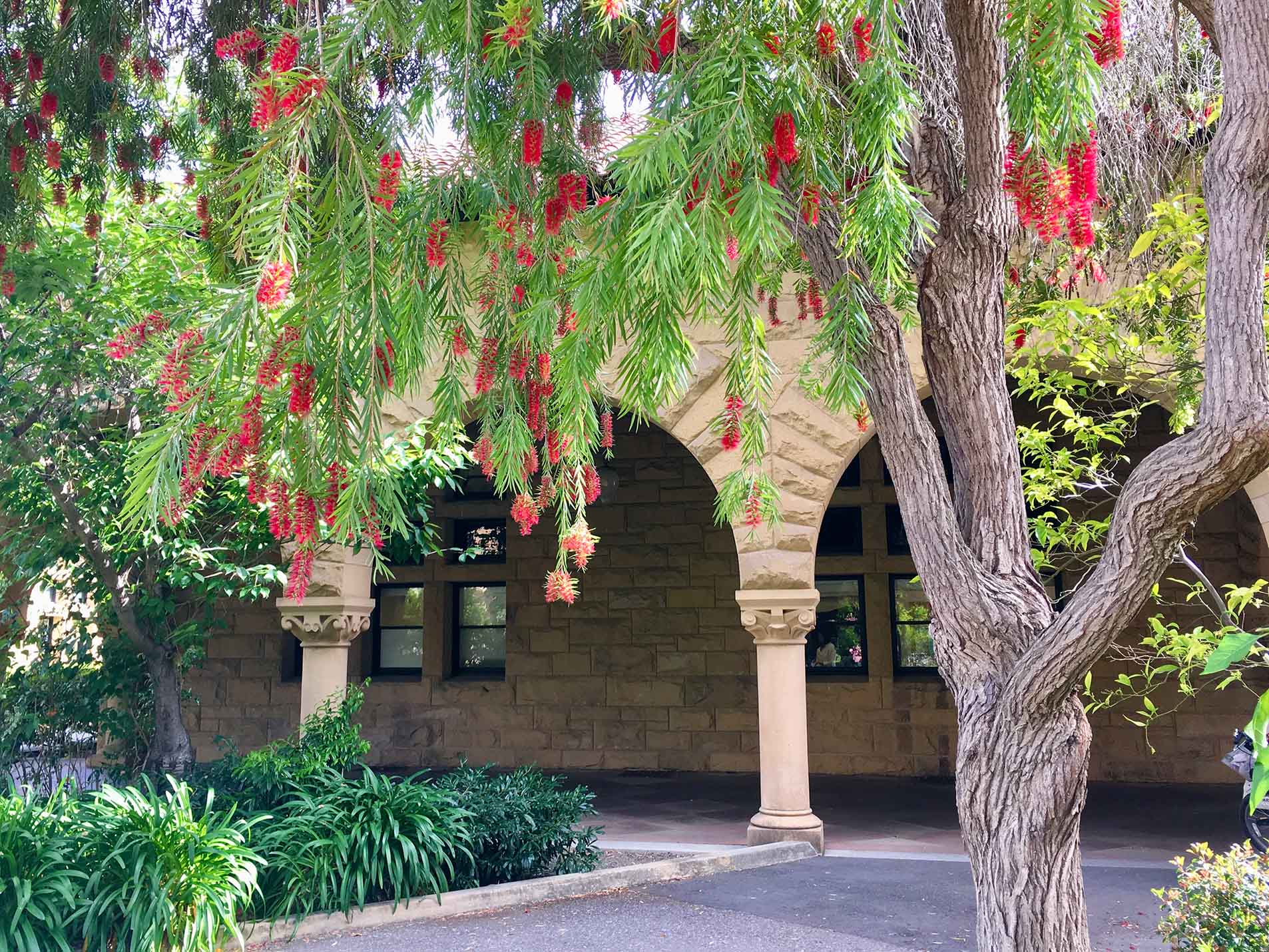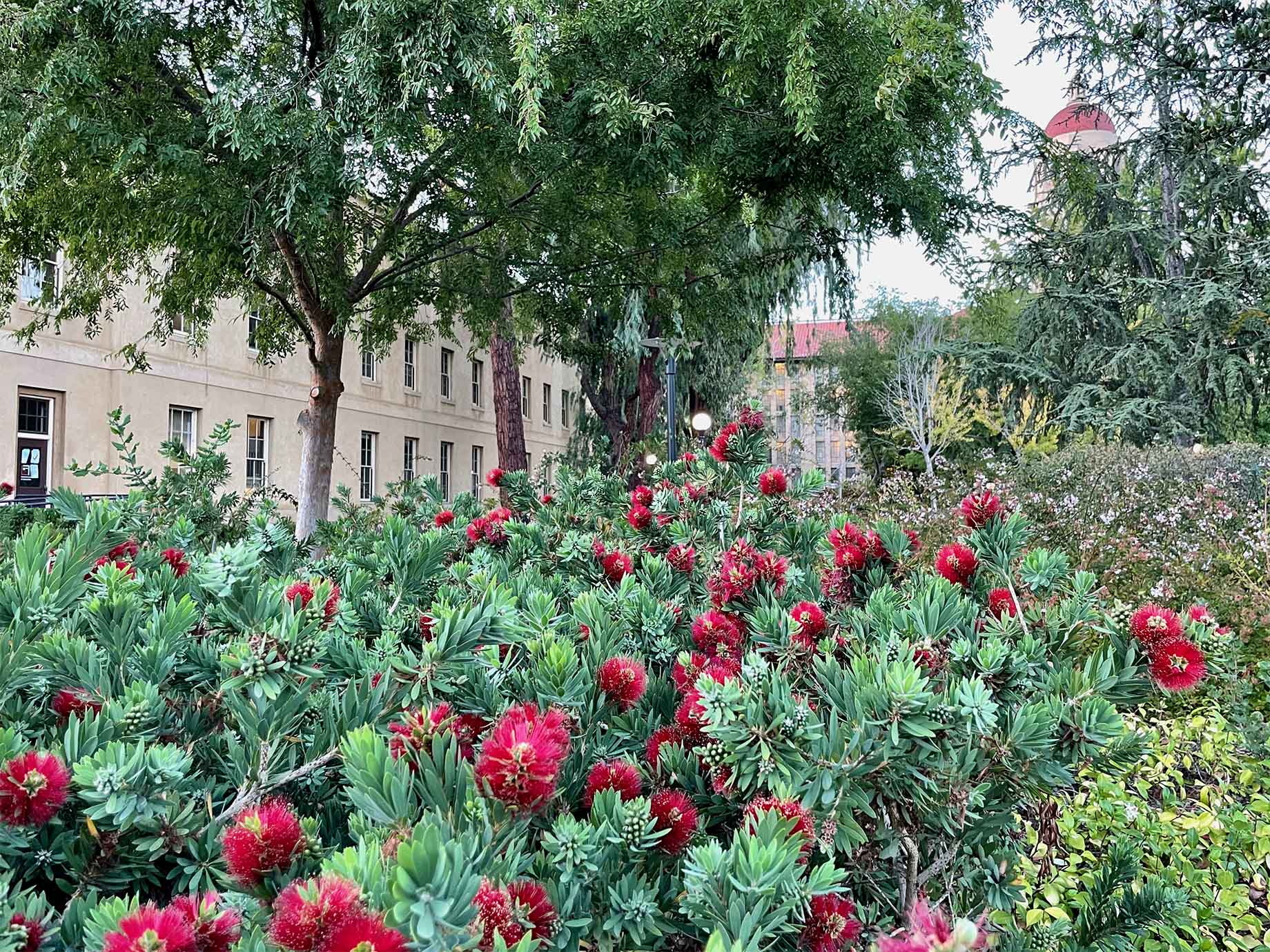Callistemon viminalis
 weeping bottlebrush
weeping bottlebrush
A small tree with pleasing willowy foliage, leaves ¼ inch wide and 3 inches long, and striking red bottlebrush flowers, mostly in summer. When the flowers go, groups of seed capsules encircle the branchlets like knobby sleeves, where they remain for years without releasing their powdery seed. The sleeves of previous years can be tracked back along the branches where they may in due course become engulfed by new wood. Gardeners may find that pruning the dead flowers improves flowering. Hummingbirds and orioles visit the flowers for the nectar, as do destructive squirrels. Australians steeped the flowers in water to make a bush remedy for sore throats.
Two stand to the west of Building 10 in the History Corner courtyard. Several are near the south corner of the Fire Department complex facing Serra Street along with a couple of shrubby C. citrinus. In Escondido Village, see some at 60 Olmsted Road and nearby. The Junipero Serra Boulevard greenbelt uses C. viminalis as part of the screening shrubbery.
Callistemon ‘Little John’ is a popular dwarf hybrid with neat blue-green leaves; see it at Meyer Green. In 2013 it was planted along Bonair Siding at the center divider at Campus Drive.
· Callistemon and Melaleuca: Key to Species
Name derivation: Callistemon – Greek kalli, beautiful, and stemon, a stamen, in reference to the characteristic long, showy stamens; viminalis – Latin, with long, flexible twigs.
About this Entry: The main text of this entry is from the book Trees of Stanford and Environs, by Ronald Bracewell, published 2005. Note on Litte John and key added by John Rawlings. History Corner, Escondido Village, and Meyer Green locations added; edits; all locations up to date (May 2023, SP).





